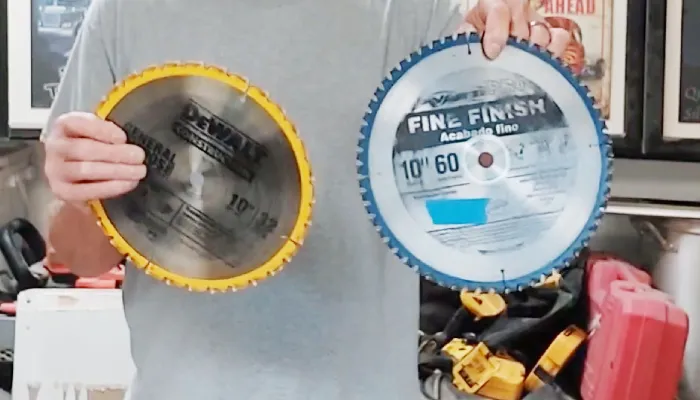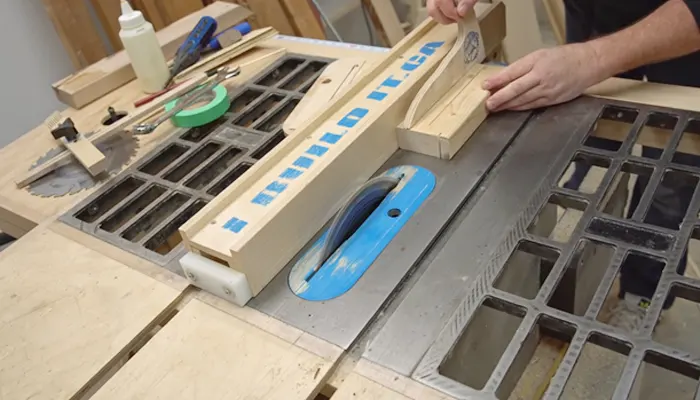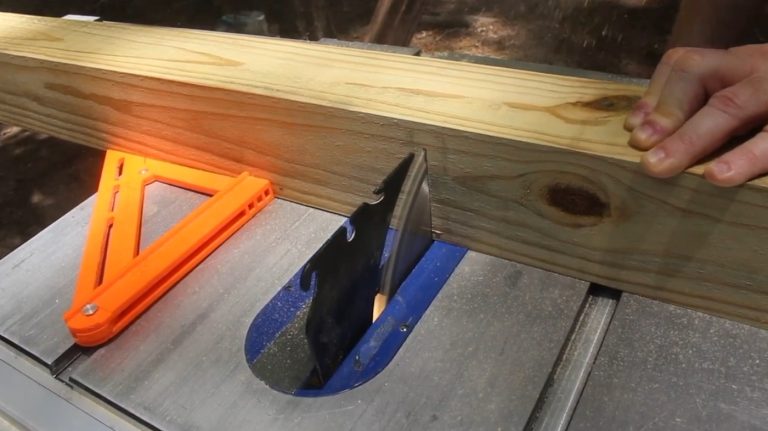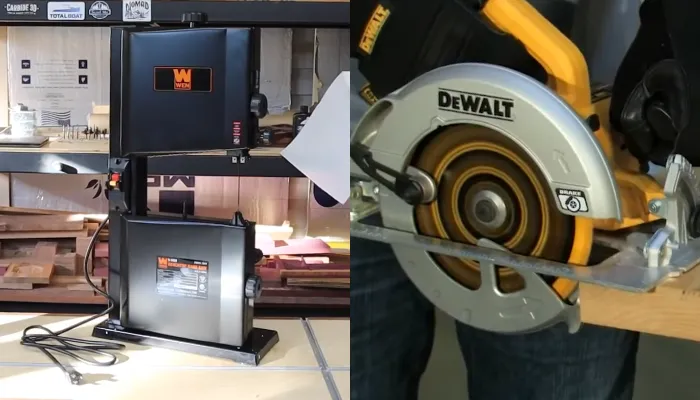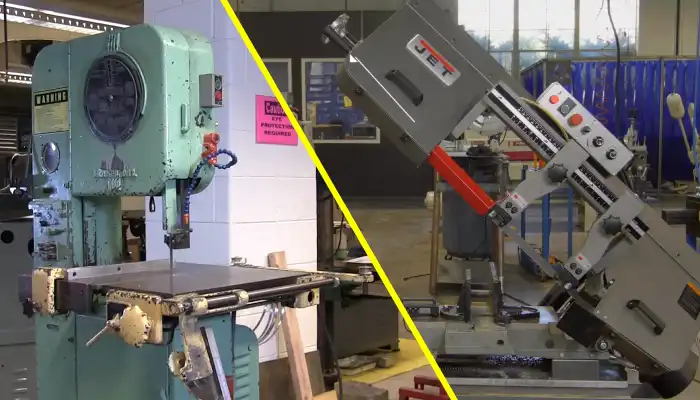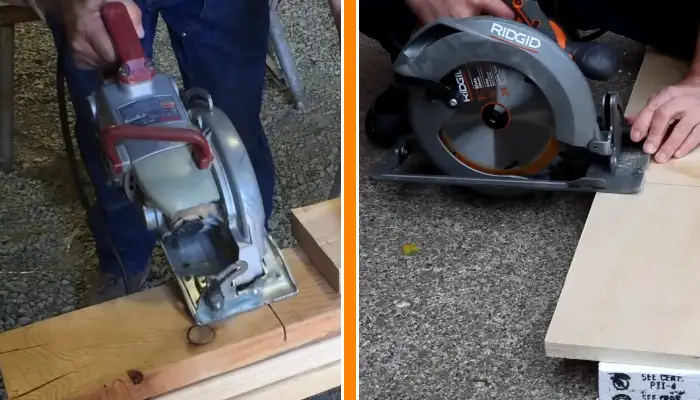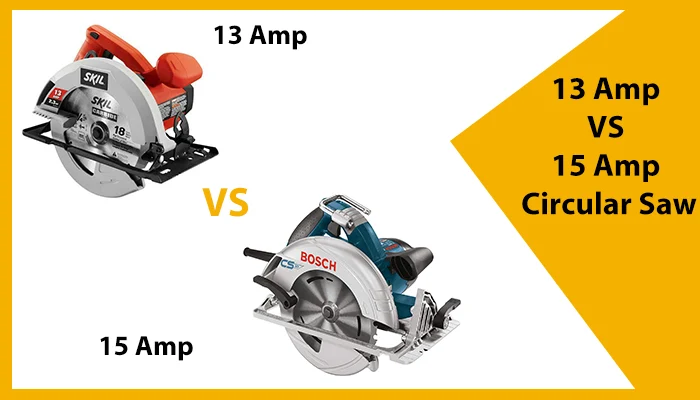How Long Does a Table Saw Blade Last: 10 Interesting Facts
As a woodworking enthusiast, I’ve come to appreciate the importance of a sharp and reliable table saw blade. It’s the unsung hero of any woodworking project, effortlessly slicing through wood with precision and finesse. But just how long does a table saw blade last before it starts losing its edge?
Based on my findings, carbide-tipped blades can last 6 months to a couple of years, depending on how often and intensely they are used. The blade tooth count, coating, environment and more can also affect its lifespan.
Throughout this article, I’ll discuss the factors that influence a blade’s lifespan, how to spot signs of dullness, and whether it’s worth sharpening or replacing.
How Long a Table Saw Blade Lasts: Factors to Consider
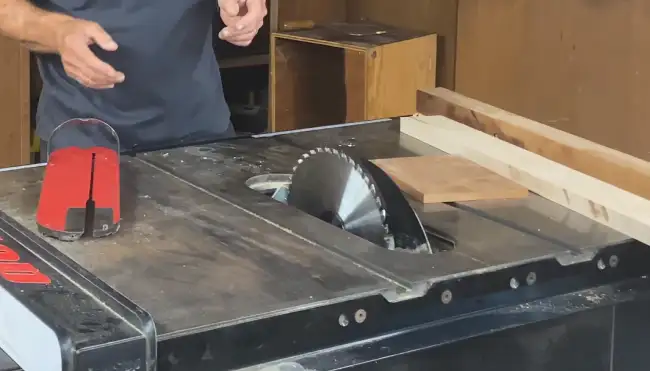
I’ve found that several factors can significantly influence the lifespan of a table saw blade. Below is a list of each important one:
- Blade material
- Tooth count and design
- Material being cut
- Cutting frequency
- Saw power
- Blade tension and alignment
- Feed rate
- Coating and lubrication
- Maintenance practices
- Environmental factors
No 01: Blade Material
I’ve found that the choice of blade material can significantly affect the longevity of a table saw blade in woodworking. High-quality blades made of premium materials such as carbide or diamond tend to outlast blades with lower-quality materials.
Carbide-tipped blades, in particular, are renowned for their durability and ability to withstand heavy usage. Their longevity is due to carbide’s significantly higher hardness than that of other blade materials. This hardness allows the blade to maintain its sharpness for longer without succumbing to wear and tear.
Additionally, carbide blades are less prone to chipping or breaking, ensuring consistent and reliable performance throughout their lifespan. Therefore, investing in a table saw blade made from high-quality materials like carbide can greatly extend its lifespan and deliver consistent cutting results.
No 02: Tooth Count and Design
As I know, the tooth count refers to the number of teeth on the blade, and blades with more teeth tend to last longer. This is because each tooth takes on less load, resulting in reduced wear. Blades with higher tooth counts are especially beneficial when cutting through harder materials like hardwood or plywood.
In addition to tooth count, the design of the teeth also plays a crucial role in the blade’s lifespan. Different tooth designs are available, such as alternate top bevel (ATB) and triple-chip grind (TCG).
ATB blades have alternating beveled teeth, which provide clean and smooth cuts, reducing strain on the blade. In contrast, TCG blades have trapezoidal teeth with flat tops and chamfered edges, which make them ideal for cutting laminates and melamine with high abrasion.
No 03: Material Being Cut
Different materials have varying levels of hardness and abrasiveness, which intensify the wear and tear on the blade, whether on a jointer or a table saw.
When cutting softer woods, such as pine or cedar, the blade experiences less stress and is likely to last longer. On the other hand, cutting hardwoods like oak or maple puts more strain on the blade, potentially reducing its lifespan.
Furthermore, abrasive materials like metals can significantly wear down the blade, causing it to dull more quickly. I believe it’s essential to consider the material being cut when selecting a table saw blade, as it directly affects the longevity and performance of the blade.
No 04: Cutting Frequency
The cutting frequency is a crucial factor that directly affects the lifespan of a table saw blade. From my knowledge as a woodworking enthusiast, I’ve found that blades that are used more frequently tend to wear out faster compared to those used infrequently.
When a blade is used daily or in heavy-duty applications, it undergoes more stress and encounters more cutting cycles. This constant use increases friction, heat, and wear on the blade’s teeth. Over time, the blade’s sharpness and cutting performance diminish, necessitating more frequent replacements.
Conversely, blades used infrequently for light tasks experience less wear and can last longer before needing replacement. Therefore, it’s essential to consider the cutting frequency when determining the lifespan of a table saw.
No 05: Saw Power
When the motor lacks sufficient power for the cutting task, it places undue strain on the blade, leading to faster wear and potential damage.
Inadequate power causes the blade to work harder to make the desired cuts, resulting in increased friction and heat generation. This excessive strain can cause the blade’s teeth to dull more quickly, reducing their cutting efficiency and lifespan.
Additionally, a lack of power can cause the blade to bind or kick back, increasing the risk of accidents and further damaging the blade.
I recommend using a table saw with an appropriate motor that can handle the cutting requirements is crucial to extending the blade’s longevity.
No 06: Blade Tension and Alignment
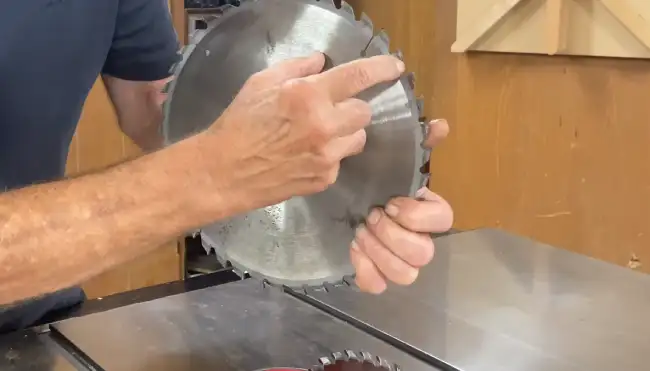
Proper blade tension is vital because it affects its stability and cutting accuracy. When the tension is too loose, the blade can deflect, causing premature wear and reducing the quality of the cuts. Excessive tension can lead to blade distortion and overheating, shortening its lifespan.
Use a tension gauge to measure blade deflection and follow the manufacturer’s instructions for your table circular saw.
Additionally, you should pay close attention to blade alignment of your table saw. Misalignment can cause the blade to cut at an angle, resulting in uneven cuts and increased wear. Ensure the blade is parallel to the miter gauge slots and perpendicular to the table surface.
No 07: Feed Rate
The feed rate refers to the speed at which you push the material through the saw.
If you feed the wood too quickly, the blade can overheat and wear out prematurely. On the other hand, if you feed the wood too slowly, there can be excessive friction between the blade and the wood, leading to increased wear.
Finding the optimal feed rate is crucial for maximizing the blade’s longevity. To determine the ideal feed rate, I strongly suggest considering the type of wood you are cutting, the wood’s thickness, and the blade’s tooth configuration.
No 08: Coating and Lubrication
Finding the right coating and lubrication for your table saw blade is crucial for maximizing its longevity and performance. Specialized coatings, such as carbide or ceramic, offer exceptional protection against heat and friction, reducing wear and tear on the blade.
These coatings are a barrier, preventing wood chips and debris from adhering to the blade’s surface. This enhances the blade’s lifespan and ensures smoother and more precise cuts.
Lubrication features, whether embedded or applied during use, further contribute to the blade’s longevity. They reduce friction between the blade and the wood, minimizing heat buildup and preventing the blade from becoming dull prematurely.
No 09: Maintenance Practices
Regular maintenance practices play a crucial role in extending the lifespan of a table saw blade. Cleaning the blade after each use is essential to remove any accumulated debris, such as wood chips and resin, which can cause friction and heat. A cleaning solution specifically designed for saw blades helps dissolve stubborn residues.
Additionally, periodic sharpening is necessary to maintain the blade’s cutting efficiency. Dull blades reduce the quality of cuts and require more force, increasing the risk of accidents.
Proper storage is another important maintenance practice. Storing the blade in a clean, dry, and protected environment prevents corrosion and damage.
No 10: Environmental Factors
The environment in which a table saw operates can significantly affect how long a blade lasts. As I know, dust, moisture, and other contaminants are major culprits that can accelerate wear and corrosion.
Dust, in particular, can accumulate on the blade teeth and cause them to become dull more quickly. Moisture can lead to rust and corrosion, reducing the blade’s lifespan.
To mitigate these environmental factors, it’s crucial to have an efficient dust collection system in place to remove dust and debris from the cutting area. Additionally, storing the blade in a controlled environment, away from excessive moisture and contaminants, can help preserve its longevity.
How do I know if I need a new table saw blade?
Based on my research, a new blade is needed when you see chipped teeth or rounded edges on a table saw blade. These indicate that the blade has undergone significant wear and tear and is no longer performing at its best.
Chipped teeth can affect the smoothness and accuracy of your cuts, leading to uneven edges and decreased overall cutting performance. And rounded edges indicate that the blade has become dull and can no longer make clean, precise cuts.
How do I know when my table saw blade is dull?
You can easily tell when your table saw blade becomes dull by your cuts’ decreased smoothness and accuracy. The blade will start struggling, pushing harder on the wood through the saw. Instead of effortlessly gliding through the material, the blade feels dragging and catching.
Another telltale sign of a dull blade is that the wood tends to burn or smoke when cutting. The friction caused by the blade struggling to cut through the material generates heat, resulting in scorch marks and a distinct smell of burning wood.
How many times can you sharpen a table saw blade?
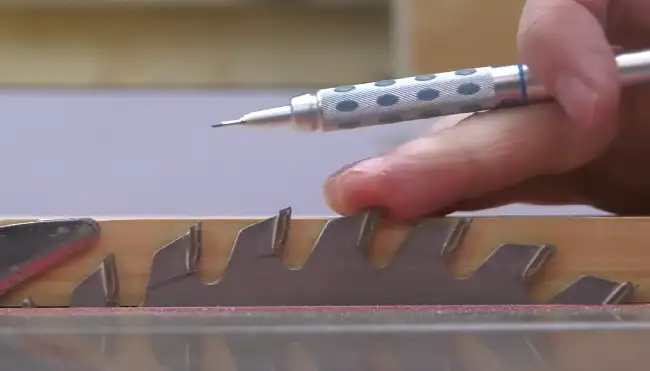
As I know, a table saw blade can typically be sharpened 3 to 4 times before the teeth need to be replaced. Sharpening a blade is an effective way to extend its lifespan and save money.
However, it’s important to note that each time a blade is sharpened, some material is removed from the teeth, eventually reducing their size. This means the teeth may become too small to cut through the material effectively after a few sharpenings.
Prolong the Lifespan of Your Table Saw Blade
After meticulously examining the factors that determine the lifespan of a table saw blade, it’s safe to say that the answer lies in the hands of the user.
Regular maintenance practices, including cleaning and sharpening, are pivotal in preserving the blade’s effectiveness over time.
I recommend choosing a high-quality blade with appropriate coatings and considering factors such as tension and alignment that contribute significantly to extended durability.
Just like a skilled surgeon knows when to replace their scalpel, a seasoned woodworker can discern when their table saw blade has lost its edge.

